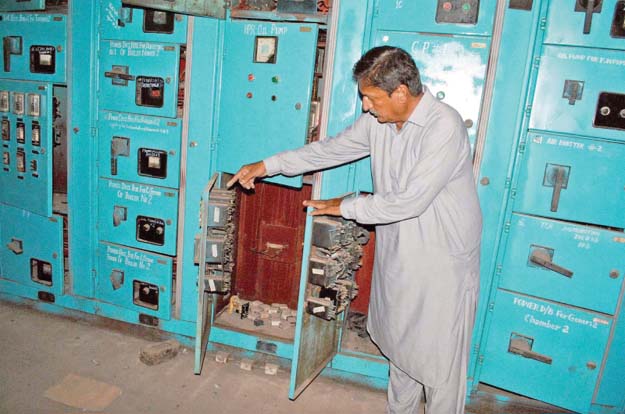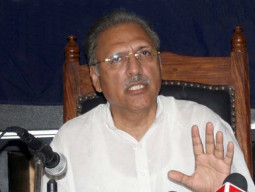
As Wapda faces an annual loss of around Rs1 billion in terms of salaries, pensions and other expenses for the plant, which is located in Jamshoro district along the Indus Highway, the employees fret over their de facto redundancy. Earlier this year, the salaries were delayed by two-and-a-half months. Though the payment cycle has subsequently resumed, some allowances have reportedly ceased.
On July 20, 2017, the plant caught fire and its only functional unit out of the three 50MW units, which was producing 35 MW at its reduced capacity, stopped functioning. The Lakhra Power General Company Limited (LPGCL) restored that unit by December, 2017. However, NEPRA which had stopped buying electricity from Lakhra since the fire incident, continued with its undeclared moratorium. In July, 2017, LPGCL was selling electricity to NEPRA at around Rs10 per unit.
Work progress on coal-fired power plant satisfies PPIB
“There is a lobby [in the WAPDA authorities] which has been continuously working to make the plant a white elephant so that it can be sold along with its coalmine to a private company,” an official, who requested anonymity, asserted while talking to The Express Tribune. He cited the 2006 lease of the plant by former president Pervez Musharraf’s regime to the Associated Power Generation Company to corroborate his contention.
The 20-year lease was challenged by the plant’s workers’ union in the Sindh High Court and later in the Supreme Court, which in 2013 stopped the government from privatising the plant. “The admitted record reveals that AG [Associated Power Generation Company] was unilaterally given prior access to the Lakhra Power Plant evidencing the availability of an unfair advantage,” the judgment read. “AG had access to the decision-making authorities at the highest level not only in Wapda but also in the Presidency.”

History
This maiden coal-fired power plant in Pakistan began operations in 1995. For its establishment near the Lakhra coalfield, where around 1,300 million tons of lignite coal reserves were estimated, several feasibility studies were conducted from 1967 to 1988. In 1985, WAPDA prepared the PC-1 and China’s Dongfang Electric Corporation (DEC) provided the supplier’s credit to the project.
The contracts for supply and erection of the mechanical and electrical equipment as well as the main civil works were signed in August, 1989, and February, 1990, respectively. The plant is set up on 462 acres of land, including the 277-acre plant and 114-acre residential colony, besides other land uses. The mine is located around 20 kilometres west of the power station and is being operated by the Lakhra Coal Development Company. The power station dispatches power to the national grid through three 132 kV transmission lines in Jamshoro.
The LCDC was established through a joint venture of Pakistan Mineral Development Company (PMDC), Government of Sindh and Wapda. Its main objective was to supply coal to the Lakhra power station. From 1995 to 1999, the mine’s production varied from 317,000 to 394,000 metric tons per annum for the generation of 150 MW of electricity.
However, as the plant’s output kept sliding in the years that followed, with the coal consumption decreasing to as low as 63,000 metric tons in 2013. Due to the drop in the plant’s consumption, LCDC began selling the coal in the open market.
Dilemma
The employees’ union claims that Wapda has been ignoring the plant’s routine maintenance, inspection and overhaul for almost last two decades. An official at the plant told The Express Tribune that the lifespan of each of the three units is 262,800 hours, which equals to 10,950 days or 30 years.
However, each unit required a month-long closure for inspection and maintenance after every 10,000 hours or 416 days. “The inspection of the three units has been done only once in 1999,” the official claimed. Unit number one went under inspection on September 30, unit number two on October 31 and unit number three on August 1, the same year.
Abbasi Shaheed Hospital temporarily loses power supply
“The plant’s management can’t order an inspection without directives and funds from the Wapda authorities. And, therefore, despite the requirement the operations have continued without maintenance,” he said. Unit number one, which was generating 35 MW before the fire incident, has completed 64,914 hours of its lifespan, unit number two 28,045 hours and the third unit 44,643 hours.
“The lobby which is against the plant often says that it has completed 25 out of 30 years of its existence. But this argument is fallacious,” the official contended. “The life is counted in hours not years.”
Ghulam Rasool Detho, general secretary of the union, said that the strength of the employees at LPGCL was 418 on July 20, 2017, besides 250 contractual staff. During thelast 14 months, he added, around 140 employees have been transferred to other power stations while the 250 staff on daily wages have been sacked.
“The company hasn’t been able to pay the sweepers at the residential colony which has resulted in a complete lack of cleanliness. The water supply and filtration has also been affected.” The colony accommodates 685 houses, a mosque, a hospital, a primary school, a clubhouse, and guest houses.
Business plan
On August 17, 2018, the LPGCL’s board of directors wrote a letter to the secretary of the ministry of energy, narrating their financial woes and submitting two business plans. “The company is facing serious crisis of cash flow to meet the establishment’s expenses,” reads the letter.
Since January 1, 2018, the funds for payment of salaries, pensions and other liabilities are being arranged from GENCO-I on loan basis, the BoD stated. “Even though only one unit worked in July, 2017, the company’s cash flow remained positive and it was able to meet all payments out of its sales invoices of electricity dispatched from the plant.”
From 2012 to 2017, when the plant was operating, LPGCL sustained Rs430 million loss whereas the financial loss of just one year after closure has accrued to Rs992 million. It is the only coal powered station which generated electricity from indigenous coal. The plant and its mine have provided employment to thousands of people.
The board submitted two business plans to Wapda. One includes $33.51 million funds for holistic overhaul of the three existing units. The second suggests construction of a new 330 MW coal fired plant in Lakhra’s premises which will get supply of indigenous coal from the Lakhra coalmine.
Around 300 acres of land in the vicinity is available for the new plant and its adjunct structures like storage yards for coal and limestone, workshops, admin building and residential colony, among other purposes. The new plant will require 0.33 million tons of coal per year, which the coalmine with its proven 82.4 million ton reserve, will be able to supply.
The additional chief engineer, Shabbir Jatoi, told The Express Tribune that the Rs992 million loss per year can decreased by two-thirds to around Rs330 million if only 35 MW are generated and sold to NEPRA. He believes that the company can recover all the losses in three to four years if the government provided funds for the rehab.
“The plant can generate 120 MW after the rehab by spending $33.5 million. In comparison, a new coal plant will cost $1.3 million per megawatt which will equal to $156 million for 120 MW which is almost five times more expensive than the overhaul cost,” he contended.
On Wednesday, the Senate’s Standing Committee on Power Division, under the chairmanship of Senator Fida Muhammad, constituted a sub-committee for the revival of LPGCL. “We want this power plant to be operational as this is the asset of the state and is providing employment to hundreds of people,” said Senator Moula Bux Chandio.
Published in The Express Tribune, October 6th, 2018.

















COMMENTS
Comments are moderated and generally will be posted if they are on-topic and not abusive.
For more information, please see our Comments FAQ